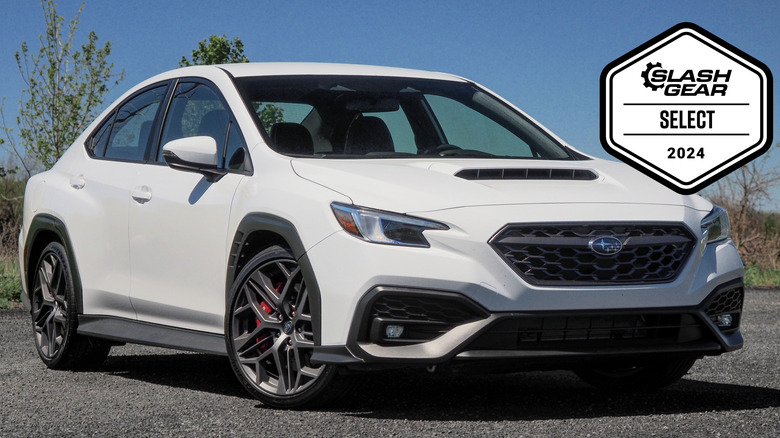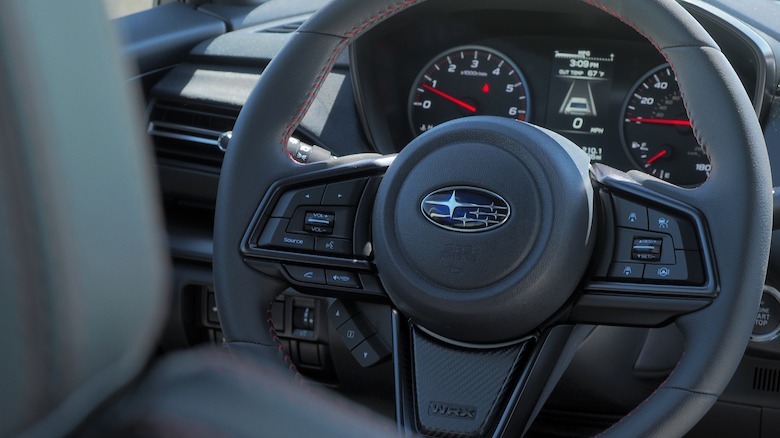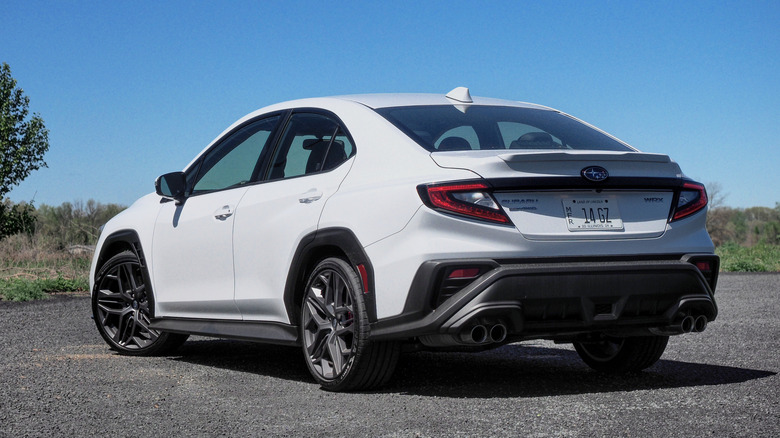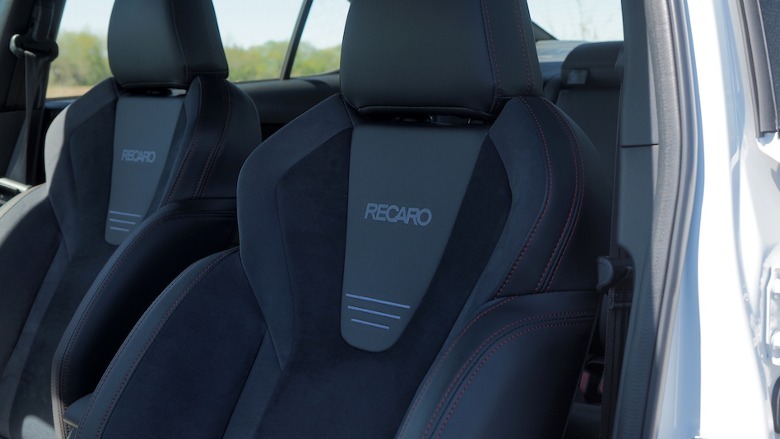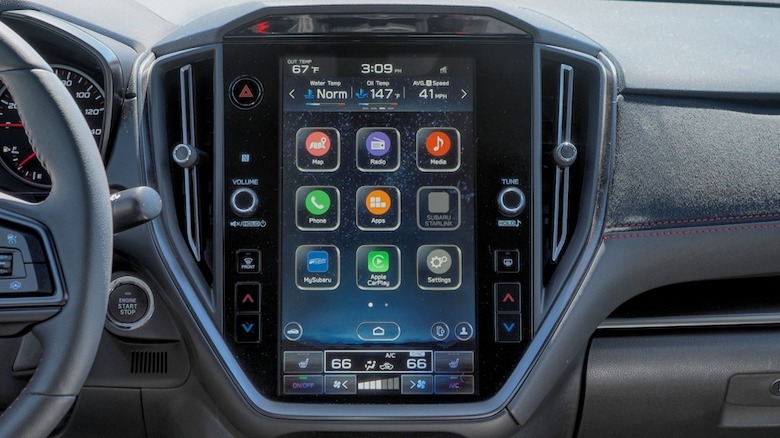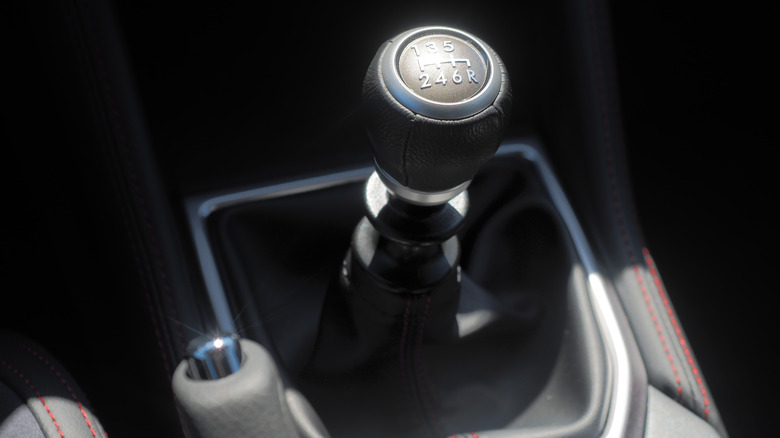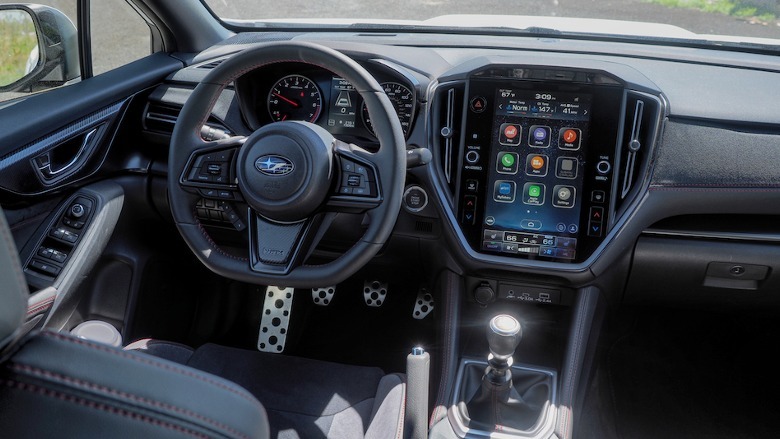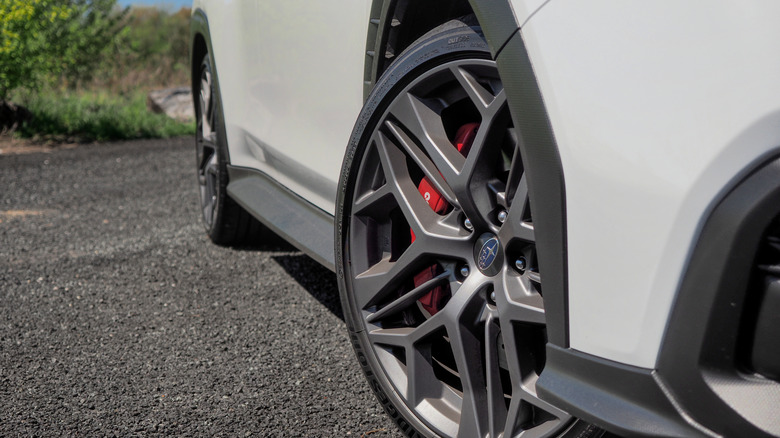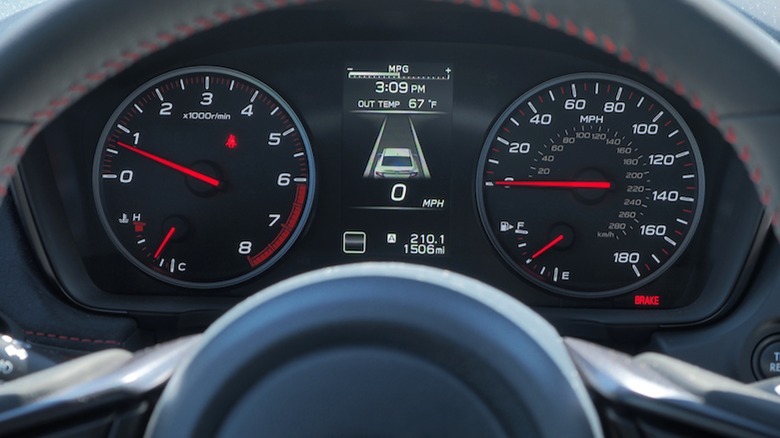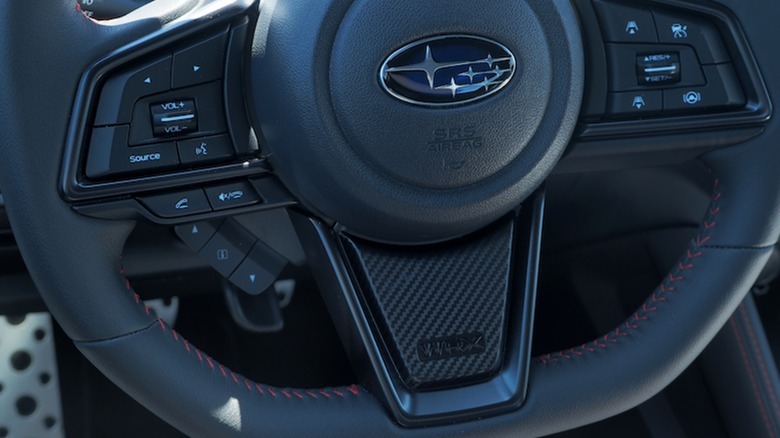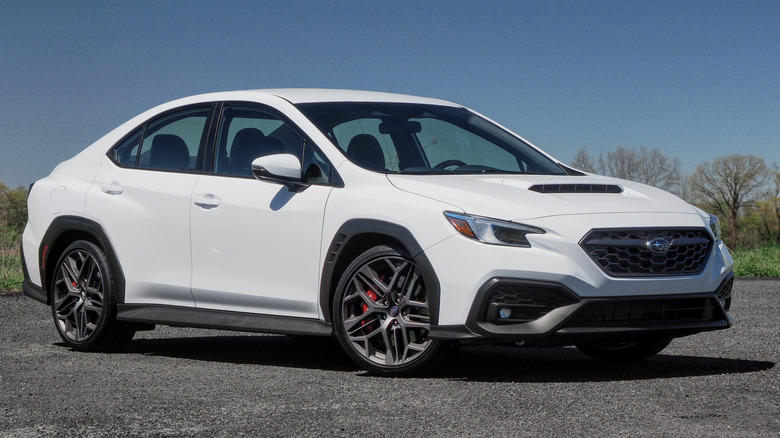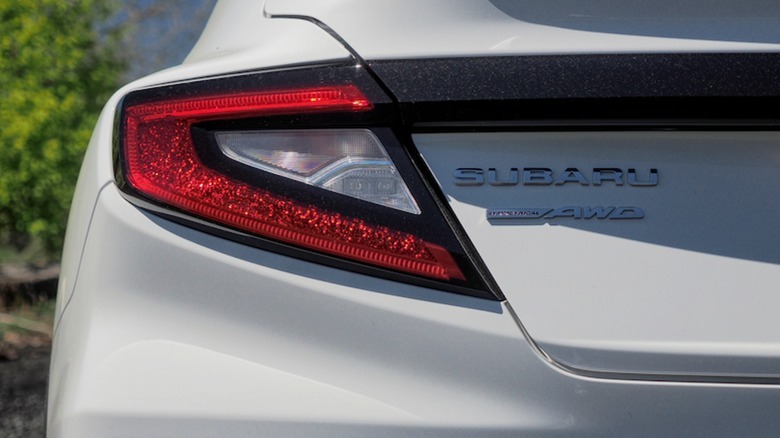2024 Subaru WRX TR Review: More Special But Still No STI
- Closest thing to a new STI you can get
- 6-speed manual is crisp
- Plenty of grip
- Style and sound feel flat
- More power wouldn't go amiss
- TR's stiffer suspension dulls daily-driver potential
Heritage can be a blessing and a curse. A recognizable — and preferably beloved — brand means an automatic boost in visibility, and yet loyal fans can quickly turn to vocal critics if a product doesn't meet with their approval. That's the pinch-point that the Subaru WRX finds itself in, and which the latest 2024 WRX TR aims to address.
A nod back to 2006's WRX TR, this new version is — at $41,655 (plus $1,090 destination) — the second most expensive WRX in Subaru's current line-up. It's also, nomenclature aside, a very different proposition to the first TR. That "Tuner Ready" car was pared back to the bare minimum, prepared with the assumption that owners' first port of call would be a bevy of upgrades inside and out.
For the most part, though, 2024's WRX TR adds rather than removes. Bigger, fancier wheels with gripper tires; nicer sports seats; stiffer suspension along with a beefy brake upgrade and a little more steering feedback. Oh, and just to prove this is all focus not fancy, the sunroof is removed so as to bring the overall weight back down to near WRX Limited territory. It's not a WRX STI, no, but then again neither was the Subaru WRX By Prodrive we tried last year, and that was darn good fun regardless.
Stylish without shouting
For all the black wheel arch cladding and that gaping hood intake, the latest WRX looks a lot more restrained than the blue and gold classics of the infamous Impreza days. No outlandish rear spoiler here, just a surreptitious lip atop the trunk lid. You can't really argue with the handsome 19-inch alloy wheels on this TR trim, though, especially with the red Brembo brake calipers glinting through the rims' graphite gray finish.
Inside, there are heated Recaro Performance Design front seats — snug enough to dissuade you from dessert — trimmed in grippy faux-suede. There's more of that fabric across the dashboard, and the red contrast stitching helps lift what would other be a decidedly dark and sober cabin. Subaru's plastics are sturdy, but don't feel especially premium or fancy.
While it launched with a twin display system in the entry trim, the WRX has since graduated to use the automaker's 11.6-inch portrait touchscreen across the board. Starlink Multimedia Navigation is standard on the Limited grade up, as is a Harman Kardon 11-speaker audio system. I can't say I love Subaru's infotainment UI, which feels cluttered, but there is at least wireless Apple CarPlay and Android Auto support along with four USB ports (two each of USB-A and USB-C) split between the front and rear of the cabin.
Boxer and stick
Every WRX comes with a 2.4-liter four-cylinder turbocharged boxer engine, rated for 271 horsepower at 5,600 rpm, and 258 lb-ft of torque between 2,000 and 5,200 rpm. All-wheel drive is standard, along with Active Torque Vectoring; the latter uses braking on the inside front wheel to improve cornering. It works in combination with Vehicle Dynamics Control, which tracks performance at each wheel, and can selectively slow them or cut overall engine torque to maintain grip.
Subaru's 6-speed manual transmission is standard on the Base, Premium, Limited, and TR trims. The most expensive WRX GT only comes with the Subaru Performance Transmission, the automaker's branding for a CVT. Available as an option on the Premium and Limited trims, it gets paddle shifters to step through eight faux gears.
The mandatory CVT isn't the GT's only distinguishing factor. It's the only WRX trim to get electronically controlled dampers, with the drive mode system able to switch between a softer tune for regular driving, through to stiffer settings when you're out to have fun.
Stiff and sticky
Without that trick damper setup, Subaru's even stiffer standard tune on the TR was a wake-up call on the highway. Michigan's road surfaces aren't exactly known for their smoothness or refinement, and 120 miles of bumps and jostles weren't helping build a glowing first impression. At least the turbo-four engine is reasonably discreet at highway speeds.
Off the interstate, though, the WRX's charms became more obvious. Subaru's engaging six-speed manual plays a not-inconsiderable role, there, with a charmingly mechanical quality to its action that stops just short of demanding arduous levels of precision. Handy, since you'll be shifting a fair amount in order to keep the sedan simmering at its most potent.
Grip was never in question, though it's worth mentioning that the TR's standard Bridgestone Potenza summer tires had been swapped for a set of Michelin Pilot Alpin PA4 winter rubber. Still, you know what you're getting with a rally-inspired Subaru, and flickable dynamics with nary a concern for traction mean it's more than up to the challenge of public roads.
That leaves you to focus on nailing that combination of line, gear change, and getting power down again: torque more than anything else characterizes the WRX TR spirit, though the brake upgrade means its memorable proficiency at shedding speed comes a close second. Six piston calipers clamping 13.4-inch discs at the front, and two-piston versions on 12.8-inch discs at the rear, are a marked improvement over the regular WRX's anchors.
2024 Subaru WRX TR Verdict
There's an intent of purpose to the WRX TR, one that you'll either find refreshingly straightforward or annoyingly narrow-minded. The manual car — with no drive modes to choose between, no suspension settings to tweak, and gearshift timing left to your own best decisions — feels at odds with the ethos of most performance vehicles on offer today. Where rivals seem to feel at least vaguely obliged to concede to the comfort and compliance demands made of a "daily driver," Subaru insists on dedication from its WRX TR buyers.
The question, then, is whether the WRX's overall experience justifies that no-compromise attitude. An MX-5 Miata, for example, is never going to be called practical, but the diminutive cabin and tiny trunk are worthy sacrifices in return for its giddying playfulness. Though similarly-priced to the convertible hard-top Miata RF I reviewed recently, however, the TR-flavor Subaru was harder to warm to.
That's possibly because of the sense that Subaru didn't go as far as it could, or as we keep wishing it would. The WRX TR is stiffer and its brakes are better, but it could do with more shouty styling and a louder, more angsty bellow from its tailpipe quartet: it feels, for those who still hold out hope for a new STI, just that little bit coy. That's not an accusation you'd level at, say, the Toyota GR Corolla. The TR trim pushes the WRX further toward the raucous rally warrior we know it could be, but Subaru leaves those final steps to tuners where rivals go the whole howling hog.
